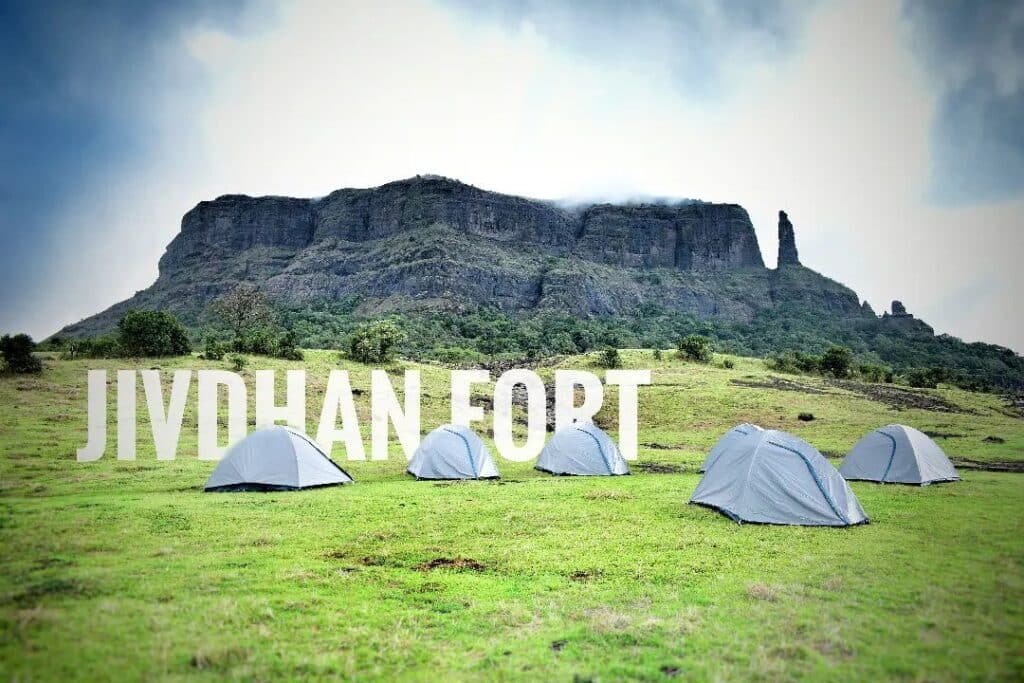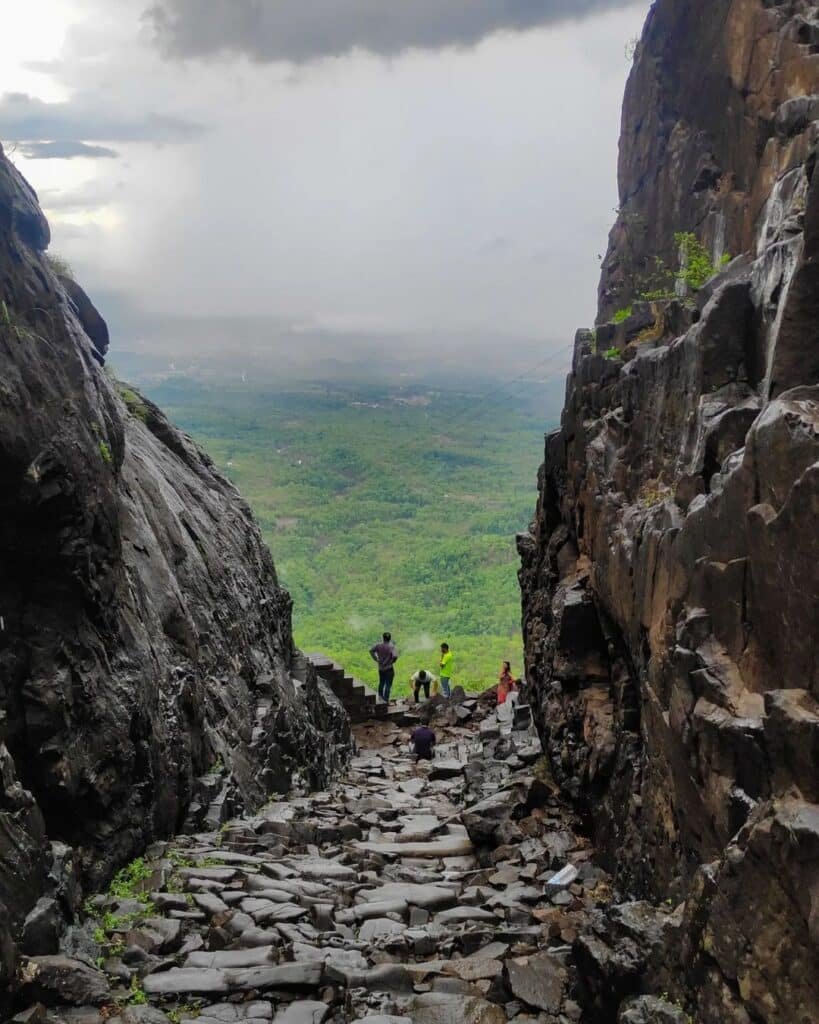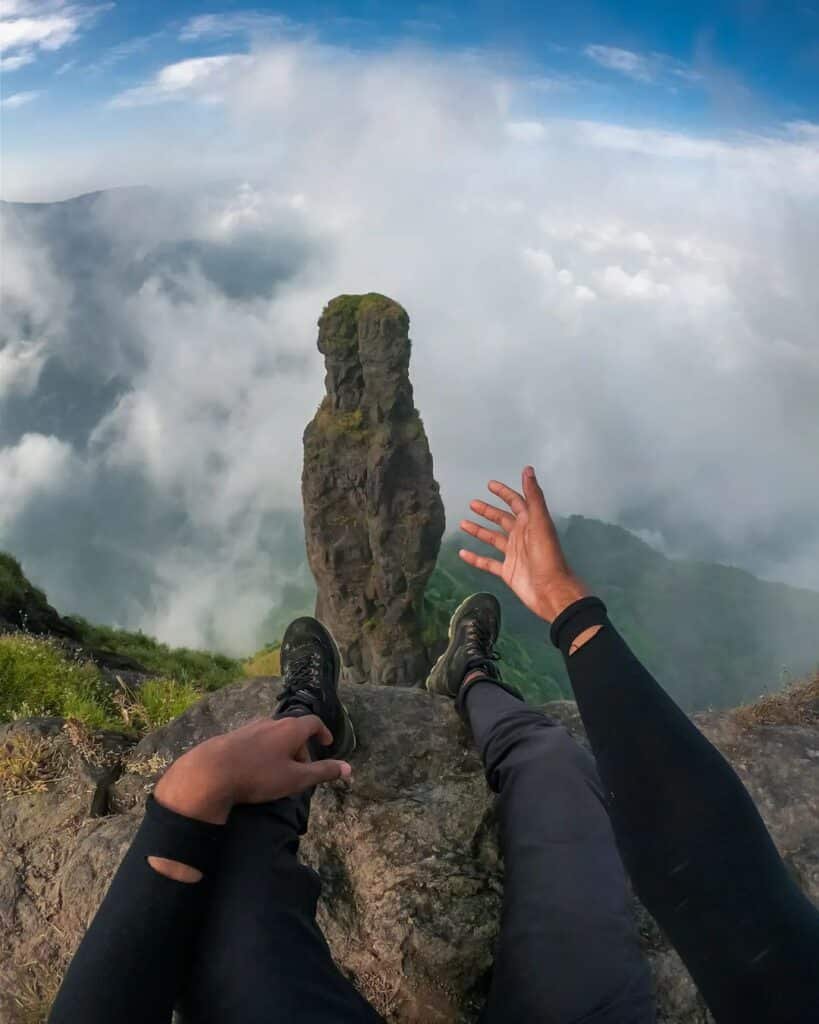Jivdhan Fort Exciting Trek – 5 things you need to know
- Trekking Destinations
-
Jun 29
- Share post
Table of Contents
ToggleJivdhan Fort: A trek for the experienced
Jivdhan Fort, famously known for the reverse waterfall, has much more to offer. Located in the Junnar area of the Pune district, Maharashtra, the fort stands tall at an altitude of 3750 ft.
The fort has two main entrances, the one from Naneghat is known as Kalyan gate, and the one from Ghatgar village is known as Junnar gate.
Naneghat was also an important pass during the ancient times for traders.
One can do both Naneghat & Jivdhan fort trek together in a day. Naneghat provides excellent views of Ahupe ghat, Machindragad & Gorakhgad.
- Region: Junnar, Pune
- Best Season: Monsoons & Winters
- Altitude: 3750 feet above sea level
- Difficulty: Moderate – Hard
How to reach Jivdhan Fort
It is near Junnar in the Pune district; you can reach the base village via public & private transport from both Pune and Mumbai.
The best option is to get a train to Kalyan on the central line from CST/Dadar.
Board a bus from Kalyan to Alephata or Malshej ghat, get down at Tokawade, and take a local rickshaw to the starting point.
You can also take a private jeep from Kalyan to the starting point, the fare will be around INR 1300-1500.
Alternatively, you can drive down from Mumbai to the starting point; the distance is 105 km and will take around 2 – 2.5 hours to reach.
Trek Route & Difficulty
This trek is meant only for experienced trekkers because of the various complex & technical rock patches on the trail.
The route from the starting point to the top is around 10 km and takes about 7-8 hours to finish the entire trek. You can also do the hike in 2 days, attempt the Naneghat trek on day 1, and complete the fort on day 2. One can camp at Naneghat or stay at a local villager’s place.
1st Part: Naneghat trek
The first part of the trek is mainly on a plateau, and you will come across various water streams on this part of the trek during monsoons; it will take around 20-30 mins to get to the 2nd part, where the forest trail starts.
The second part of the hike is a forest trail, and it is easy to get lost on it; hence it is advised to hire a local guide for the trek who can help you finish the hike without any problems.
After the forest trail, you will come across stairs and rocks, which will take you to the top of Naneghat. You will find a cave at the entrance where you can camp for the night if you want.
2nd part: The main trek
After reaching the Naneghat plateau, you will have to walk approximately 30 mins to get to the stairs and the thrilling rocks patch leading to the fort. Note: Advisable to climb the rock cut steps patch with the help of ropes during monsoons.
You can take your time and explore the top of the fort for about an hour and then start your return journey.
Important Information
- The trek is meant only for experienced trekkers. However, beginners can do the Naneghat trek.
- During monsoons, you can witness the reverse waterfall at the endpoint of Naneghat.
- It is advisable to hire a local guide for a hike or go with a trekking group as some parts of the trek are not in a good condition.
- You can get a mind-blowing view of the ‘Khada Parsi/Vanarlingi pinnacle’ from the top of Jivdhan fort.
- The Naneghat was an important trade route in ancient times. The fort acted as a protection for Naneghat.
- Local Contact: Sagar Kedari (Camping, Food & Guide Service) 📞 +918855936488
- You can check the course on Ramblr and download the GPX file.
Frequently Asked Questions (FAQs)
Yes, Jivdhan trek is difficult & is meant only for experienced trekkers because of the various complex & technical rock patches on the trail.
No, Jivdhan trek is not easy & is meant only for experienced trekkers because of the various complex & technical rock patches on the trail.
Naneghat fort is easy to climb & doesn’t require any expertise and can be done by a first-time trekker as well. However, Jivdhan fort is not easy & requires a lot of physical endurance as well as there are some technical sections where you need to experience & ropes to climb.
Jivdhan Fort was built by the Maratha ruler Shivaji Maharaj in the 17th century. It is located near the city of Junnar in Maharashtra, India.
Essential Things to Carry for the Trek
Packaging wisely is essential to make the most of your Jivdhan Fort trekking experience. Here are some must-have items for your backpack:
- Sturdy trekking shoes for a comfortable and safe trek
- Ample water and energy drinks to stay hydrated
- Snacks and energy bars to keep you fueled
- Sunscreen, cap, and sunglasses to protect yourself from the sun
- First aid kit with essential medications and bandages
- A camera to capture the stunning vistas along the way
- A light backpack to carry your essentials without weighing you down
Safety Precautions and Tips
While embarking on the Jivdhan fort trek, it is crucial to prioritize your safety. Here are some essential safety precautions and tips to keep in mind:
- Trek with a certified guide who is familiar with the route and terrain.
- Wear appropriate trekking gear and clothing to protect yourself from injuries and harsh weather conditions.
- Stay hydrated throughout the trek by drinking water at regular intervals.
- Pace yourself and take breaks whenever needed to avoid exhaustion.
- Do not litter; respect the natural environment by carrying back all your waste.
- Follow instructions from the guide and stay on the designated path.
- In case of any emergency or discomfort, inform the guide immediately.
Video of the adventurous Jivdhan Fort trek
Dhodap Fort | Nanemachi waterfall | Harishchandragad | Karnala Fort | Peb Fort | Mahuli Fort |Irshalgad | Sondai Fort | Salher Fort | Aadrai Jungle Trek | Ganpati Gadad | Korigad Fort | Tandulwadi | Garbett Plateau | Sudhagad Fort | Kataldhar Waterfall | Plus Valley | Mangi Tungi | Malanggad | Gorakhgad | Bhairavgad | Kohoj Fort | Rajgad | Ratangad | Bhimashankar Trek | Visapur Fort | Kalsubai Trek | Tikona Fort | Rajmachi Fort | Sandhan Valley | Kalavantin Durg | Andharban Trek | Harihar Fort | Kalu Waterfall
Did you like this trek guide for the Jivdhan fort trek?
We have 100s more such guides on similar off-beat experiences & we send out such guides, offers, hidden gems, and trekking destinations weekly via email. Subscribe to our newsletter to get them directly into your inbox.
Comments
Add a comment
Leave a Reply · Cancel reply
This site uses Akismet to reduce spam. Learn how your comment data is processed.




